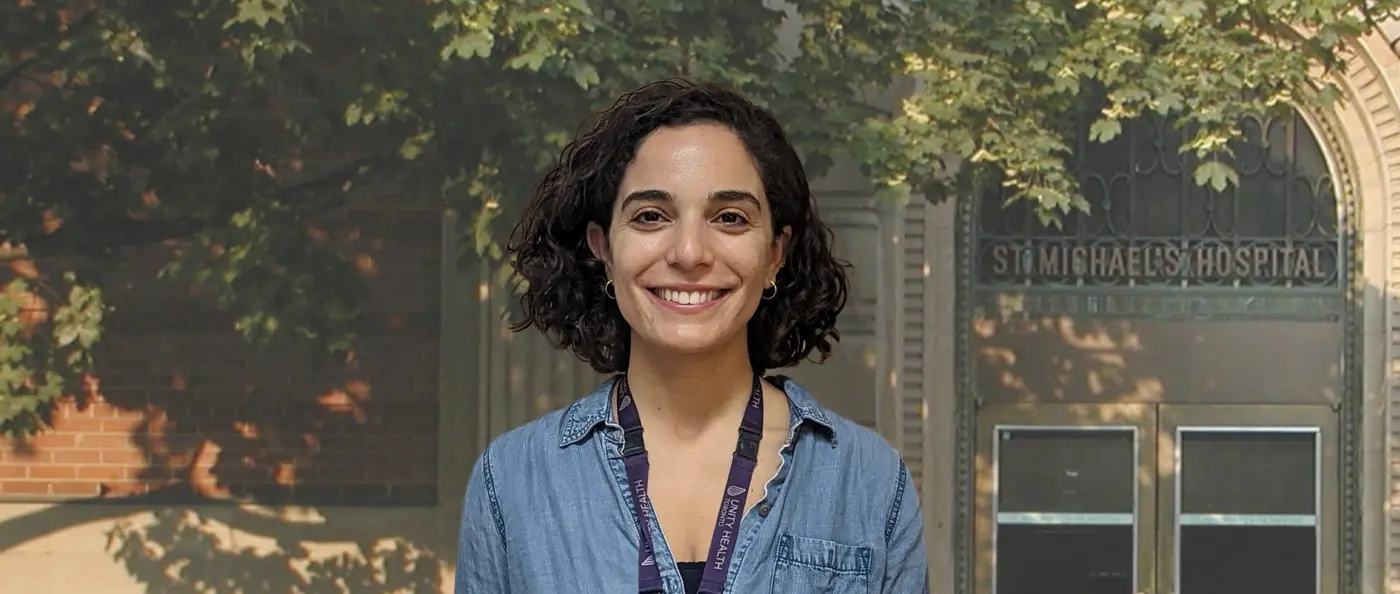Story by Alyssa Ranieri, Outreach Counsellor with the Navigator Project
I met Mike (not his real name) this past April. He’s in his 30s and lives with schizophrenia, anxiety, fetal alcohol syndrome and PTSD. It’s a lot to carry. I first met him at St. Michael’s Hospital, where he was admitted with an acute illness. He was homeless at the time.
I work in the hospital’s Navigator Program. I am a Homeless Outreach Counsellor, which means I work with patients who are homeless and who have a serious health condition requiring care in the hospital. My job is to make the healthcare experience easier and more comfortable while patients are in hospital, and afterward to help them access healthcare and other services in the community so they can avoid another hospitalization.
I arranged to meet Mike at a shelter shortly after he was discharged. We try to work with people where they are, whether on the street or in shelters. I wish more programs did this. It can be so difficult just to manage basic survival needs when you’re homeless – so we make this part easier. The people we work with don’t do well if they have to show up in an office at exactly the right time. They also often feel stigmatized in traditional healthcare settings and may have experienced discrimination in the past.
When I got to the shelter, Mike wasn’t there. I went to the pharmacy that he had told me he used regularly. He was surprised to see me. I think it convinced him that I really was on his side.
Over the next few months, Mike and I did a lot of work together. When we first met, he was in a bad cycle. People with fetal alcohol syndrome can be an easy target for bullies and thieves. He was using drugs to cope with the stress of being on the street. Then the drugs would make him paranoid and he’d end up in hospital.
Our goal was to break the cycle.
We found him somewhere to live – first in a shelter, then in a rooming house. His drug use was putting him at high risk of an overdose, so we helped him get into a new harm reduction program called Safer Opioid Supply. It’s a mobile team that includes physicians, nurses, nurse practitioners and case workers who visit people who use street drugs; the team administers a weekly supply of safe opioids. And we talked, a lot, as I tried to help him build the confidence he would need to try to overcome the hurdles standing between him and a healthier, safer future. Through all this, I was always impressed by Mike’s courage and resiliency.
I completed my time working with Mike in October, as the Navigator Program is intended to make a difference in people’s lives over a time-limited period. Over the course of several months, Mike made a lot of changes. He got settled in housing. He has supports. He’s safer and, I think, less anxious. He knows there are people who care about him.
The last time I saw Mike, he told me how grateful he was. He said he was really going to miss me. Thousands of people in Canada, just like Mike, need this kind of helping hand to improve their health. I’m doing my best to reach as many as I can.
Mike et moi : surmonter les obstacles à l’accès aux soins de santé
Récit d’Alyssa Ranieri, conseillère communautaire du Projet Navigateur
J’ai fait la connaissance de Mike (nom fictif) en avril dernier. Il a une trentaine d’années et souffre de schizophrénie, d’anxiété, du syndrome d’alcoolisation fœtale et du syndrome de stress post-traumatique. C’est beaucoup de choses à supporter. Je l’ai rencontré pour la première fois à l’Hôpital St. Michael, où il avait été admis pour une courte maladie. Il était alors sans domicile fixe.
Je travaille au sein du programme Navigateur de l’hôpital. Je suis conseillère auprès des sans-abri, ce qui signifie que je travaille avec des patients qui sont sans domicile fixe et qui ont un problème de santé grave nécessitant des soins hospitaliers. Mon travail consiste à rendre l’expérience des soins de santé plus facile et plus confortable pendant que les patients sont hospitalisés et, par la suite, à les aider à accéder aux soins de santé et à d’autres services au sein de la collectivité afin qu’ils puissent éviter une nouvelle hospitalisation.
J’ai organisé une rencontre avec Mike dans un refuge peu après sa sortie de l’hôpital. Nous essayons de travailler avec les gens là où ils se trouvent, que ce soit dans la rue ou dans les centres d’hébergement. J’aimerais que davantage de programmes fonctionnent de la sorte. Il peut être très difficile de répondre aux besoins de base des personnes sans abri; c’est pourquoi nous rendons cette tâche plus facile. Les personnes avec lesquelles nous travaillons ne sont pas très à l’aise lorsqu’elles doivent se présenter dans un bureau à un moment précis. Elles se sentent également souvent stigmatisées dans les environnements de soins traditionnels et elles peuvent avoir été victimes de discrimination dans le passé.

